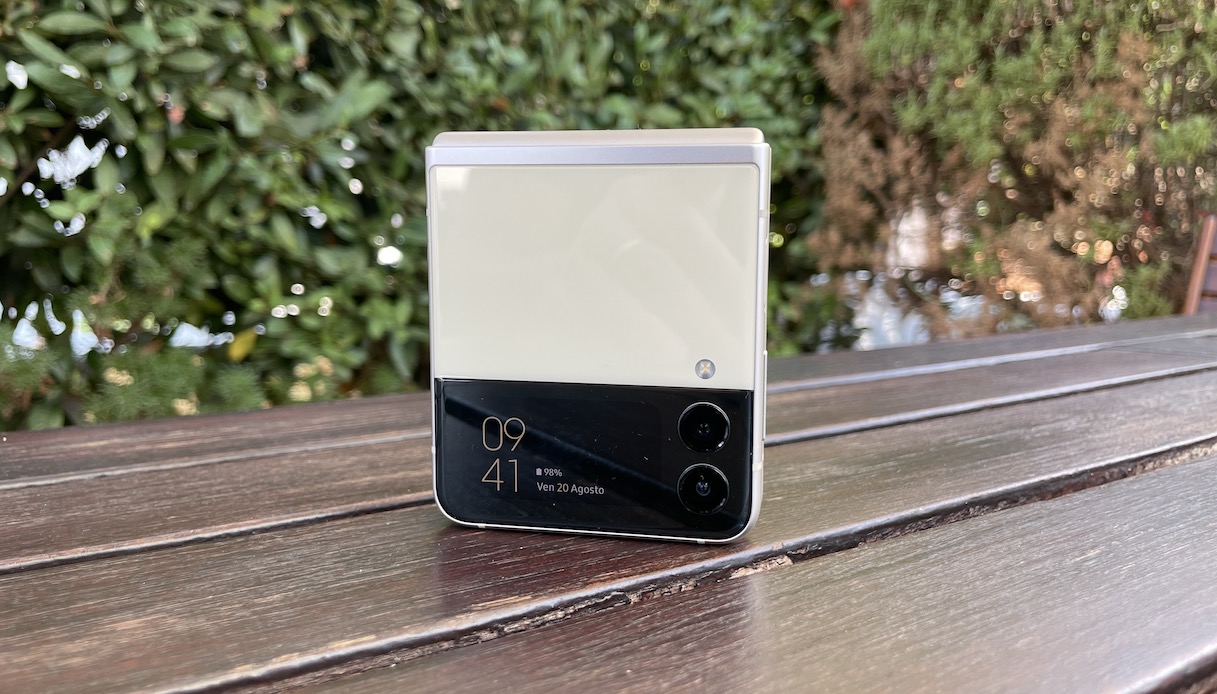In recent months we have often talked about smartphones with foldable screens, because the market is beginning to grow significantly and because the proposal is expanding significantly, today we try to understand why choose a foldable smartphone and why not, but also which smartphone with screen that folds choose.
A few weeks ago, Samsung launched its new Galaxy Z Fold 3 and Galaxy Z Flip 3 models, which have further improved their structure and resistance to everyday stresses. Al loro arrivo sul mercato, hanno registrato vendite record, dando prova del fatto che questo segmento particolare con dispositivi particolarmente costosi è destinato a crescere nel tempo e diventare sempre più importante.
Oltre a Samsung, Huawei già vende un modello con schermo pieghevole, Xiaomi ne ha lanciato uno per il mercato cinese e molti altri marchi stanno lavorando a nuovi progetti, in alcuni casi quasi fantascientifici, con display in grado di estendersi e di chiudersi arrotolandosi.
Guardare video che sono dedicati a questi nuovi modelli di smartphone con schermo pieghevole è un po’ come proiettarsi in un film dedicato ad una realtà distopica, ma in realtà parliamo di un presente ormai consolidato.

Why choose a smartphone with a foldable screen
Space optimization is the most immediate answer that can be given, because Motorola Razr and Samsung Galaxy Z Flip allow you to fold a normal-sized cell phone, to make it fit in a pocket or a handbag occupying a very small volume.
In the case of the larger models, such as Galaxy Z Fold 3 and Huawei Mate X2, we are instead faced with devices that when open offer the size of a tablet, when folded they become a normal phone, which all in all, although with a bit of bulk, fits in the pockets comfortably enough.
Dal nostro punto di vista, sono proprio questi i modelli più interessanti da utilizzare, quelli che anche se sono chiusi permettono di svolgere qualunque tipo di attività e, nel momento in cui dovesse servire uno schermo più grande, per lavorare, per guardare un contenuto multimediale, per leggere con più comodità, o semplicemente per navigare in Internet con uno spazio più grande, quando sono aperti offrono un display molto più grande, oggi anche con qualità molto elevata.
Per un uso professionale, questo tipo di smartphone può rivelarsi molto utile in molte situazioni, soprattutto ora che Samsung ha aggiunto al suo modello Z Fold 3 la compatibilità con il pennino, chiamato S-Pen, grazie al quale si può scrivere, disegnare, sottolineare, ritagliare tutto ciò che c’è sul display in modo facile ed immediato.

Perché non comprare un cellulare con display che si piega
Il primo motivo per non acquistare un prodotto di questa categoria potrebbe essere il prezzo, per il nuovo Z Fold 3 ci vogliono circa 2.000 euro, per il modello di Huawei 2.500, mentre Motorola Razr viene venduto a 1.500 euro, Z Flip 3 di Samsung a poco più di 1.000.
Dal punto di vista tecnologico, il loro prezzo è giustificato solo ed esclusivamente dalla tecnologia dello schermo pieghevole, perché tutti gli altri componenti sono gli stessi che si trovano in smartphone con le stesse caratteristiche tecniche, ma con un prezzo estremamente più basso.
Però c’è qualcosa che va oltre il prezzo, perché quando si usa uno smartphone pieghevole della categoria definita “a conchiglia” c’è anche qualche mancanza in più: questo tipo di cellulare veniva usato tantissimo vent’anni fa, quando non esistevano le applicazioni, quando non si consultavano programmi sul proprio smartphone centinaia di volte al giorno.
 Fonte foto: MisterGadget.Tech
Fonte foto: MisterGadget.Tech
Motorola è riuscita a mettere a punto un minimo di interazione con il piccolo display esterno, che funziona quando il cellulare è chiuso, ma per svolgere la maggior parte delle operazioni ci si trova puntualmente costretti ad aprire il proprio telefono.
Samsung Galaxy Z Flip, on the other hand, has an external display that has become much larger, which displays some information, but does not allow any interaction, not even that with which to respond to incoming messages.
The external display delivers the notification, but whatever you want to do, you have to open the phone and use it as a classic model with the extended screen. On a normal day, between Facebook, Instagram, email, WhatsApp messages and maybe other apps you use in your everyday life you’ll find me doing some sort of hand exercise by opening and closing the phone all the time, which is far from a comfortable situation.
Folding Display Yes or No
To date, it is difficult to find a definitive answer that applies to everyone on whether or not to buy a device with a foldable screen, but certainly this is one of the directions in which the market is going: over the next few months we will see more models in circulation that offer a display that folds, we can also expect the average price of the devices to drop in a reasonable time and approach that of the “normal” models.
From our perspective, though, “booklet” models with a fully functional external display are more convenient and more functional than clamshell models. We’re waiting for the market to confirm our theory or not.